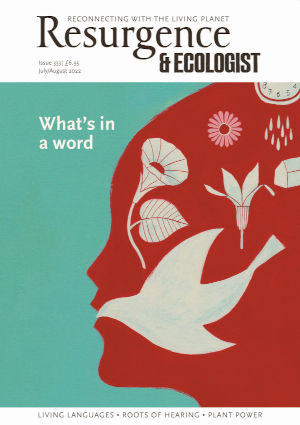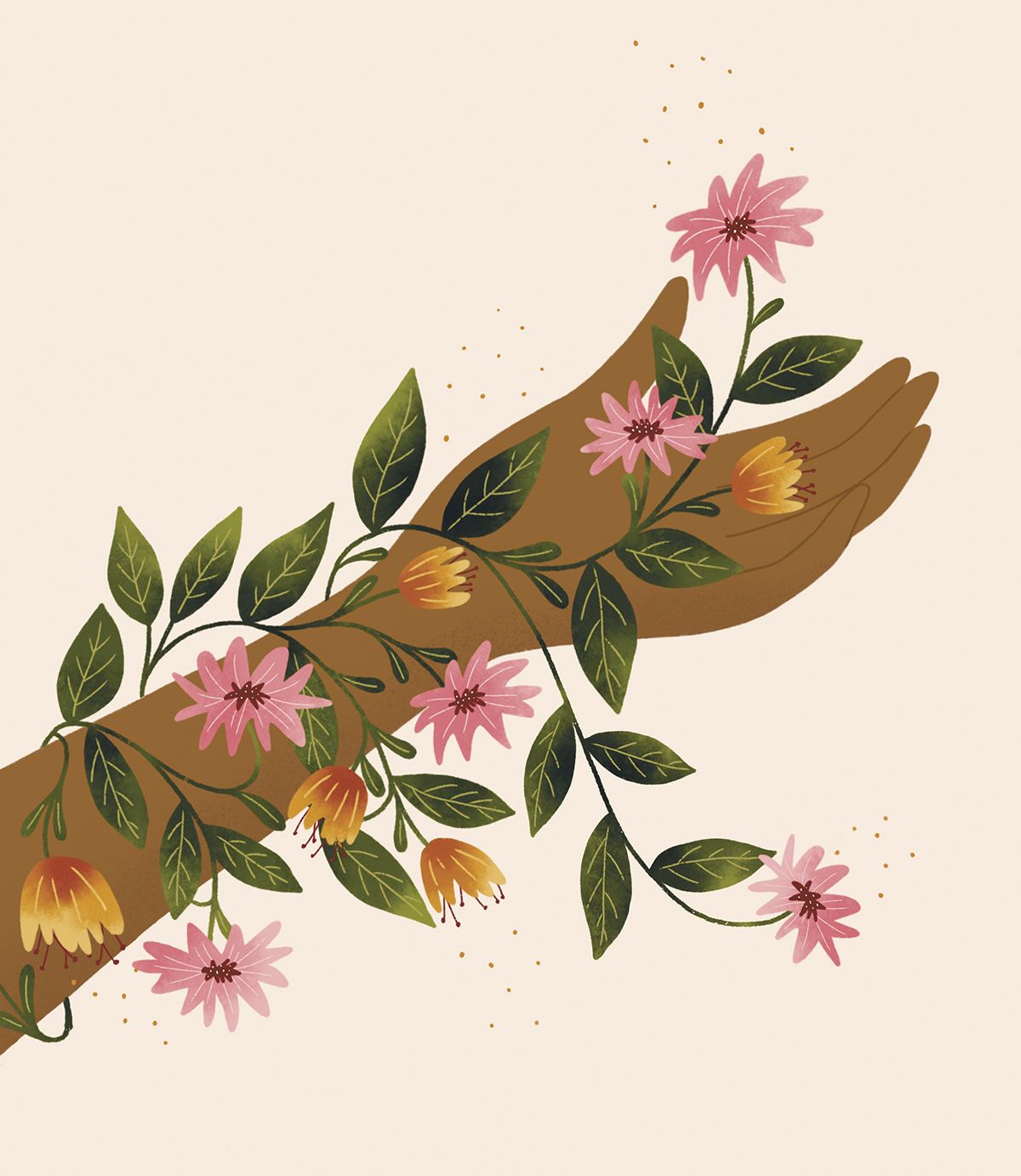We had a blank canvas of garden. After being ravaged during the installation of our new ground source heat pump, it sat beneath weed-suppressant material for many months while we thought about what to do. Our minds moved from restoring the lawn as it once was (for the children to play – but they will play anywhere), to creating a kitchen garden (now in place behind the kitchen), to establishing a meadow. A much-needed, much-touted habitat too often eviscerated in these green and pleasant isles.
We bought a native wild flower mix from an ethical retailer, seeds chosen because they were local to our region. I bristled at the nativist sentiment but welcomed the plants to come anyway. I want to learn from the plants and people and creatures who have been here longer than I have. I wish only not to be vilified for my relatively recent arrival, my body, in these parts, against my ancestors’ will.
We sowed the seeds on the bare brown soil last Lughnasadh, that point at which summer’s lush growth begins to overwhelm itself and starts the decaying tumble into autumn. Our actions sat dormant through winter rain and mud. Now it is just past Ostara, the spring equinox, one of two tipping points in the year, when light and dark hang briefly in perfect balance. I sit on the steps above the nascent meadow and watch the land green around me. At first it seems featureless, patches of green against our grey-brown clay, but then I notice the first wakeful insects hovering. They cluster around the tiny, delicately purple flowers of spreading speedwell. I must kneel and kiss the ground to fully see them.
When I do, I discover that these are not the native germander speedwell from our wild flower mix, but common field speedwell, introduced here 200 years ago, like so much else in our gardens. These seeds can survive in the soil for up to 20 years; they have made themselves at home here. Yet they are considered alien. What does it take to become native here? The pretty paired leaves on red stems hug the still-cold land beneath my feet, flower faces gaily lifted to the sun. Bird’s eyes, they are also named. I look closely to admire the darker purple stripes on the upper petals, the flower’s pair of black stamens looking back at me.
I, the foreign invasive, like so much else that begins to wake for the spring in my English garden. Brought here, like the invasive weeds, by the actions of humans who plundered other lands, who ravaged this earth from which they stripped the natives, from which they would now exclude me. Of course, plants have always come, and people too. This is the delusion of the mythic rural idyll, static in collective imagination. Our minds trapped in this common lie, bodies imprisoned away from land over which we can no longer freely roam.
Can we dream freely in our collective unconscious? We think of ourselves as primarily individuals, but teachings reside in many traditions of the self as a false construct, a mere fragment of the true organism that is the whole. I do not know how easy you find it to think of yourself in this way, as ‘no-self’, but I struggle to loosen the belief in my ‘self’ as the primary object.
The garden helps. I am but a collection of atoms more tightly bound to one another than to those surrounding. I am an ecosystem, a world of bacteria, viruses, fungi without whose functions I could not exist. I breathe in the sweet air of the trees around, breathe out carbon that they will use and return to me. I eat and drink their flesh, it forms my own, while I shed my skin walking among them, the dust of myself returning to enrich the earth. I am one small part of this community, a node in the web of relationships that holds this place, that holds me in this place. I am this place, and this place is I.
I climb the garden’s terraces from the germinating meadow to the more established beds higher up. As I walk, I watch the first clouds of waking insects feasting on the forest of spring flowers I have sown here. A robin follows me through the garden, flitting from leaf to branch, landing on soil that I have disturbed, feasting on the insects and worms in turn. The first fruits are harvested. Suddenly, at some signal that is not for my understanding, the robin leaves.
I watch parasitic larvae eat a caterpillar alive on the leaf of a purple sprouting broccoli seedling and I ask myself, what is the cause of the severing between people and the land? Why did those who lived here begin to feel it was not enough, to want more, to violently conquer other lands? But then I wonder if these thoughts are part of the same old paradigm I long to explode. To think of the relationship as wounded in this way assumes only human agency, and what do I understand of the agency of this land? I shall not underestimate it. It called me here. Me, a foreigner.
The wound may not be for my understanding, but I will sit and dip my scarred and blackened skin in the garden’s sacred stream. Next to the flowing water are dozens of primroses – Primula vulgaris. They grow here like weeds, like the speedwell of the burgeoning meadow below, but, unlike the speedwell, primroses are native here. The flowers are edible, and sweet. Along with the leaves, they have been used as a salve for wounds for centuries.
I will feast on the garden’s first fruits. Flesh of my native flesh, invasive wound of my heart, we will heal.
Marchelle's article will be the focus of the Readers' group on 19 July, 7-8pm. Book tickets.








